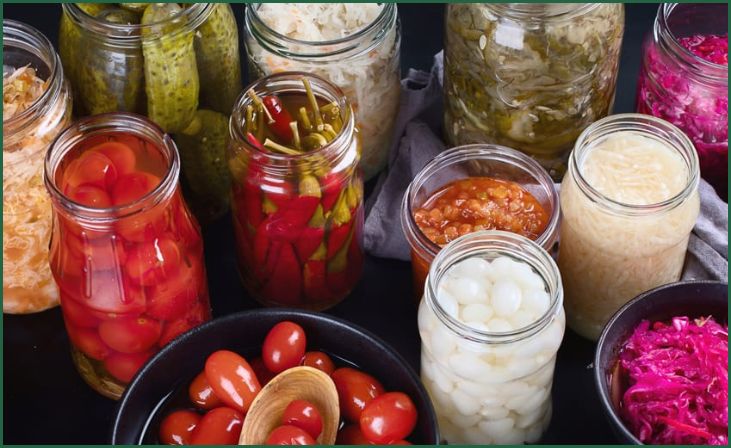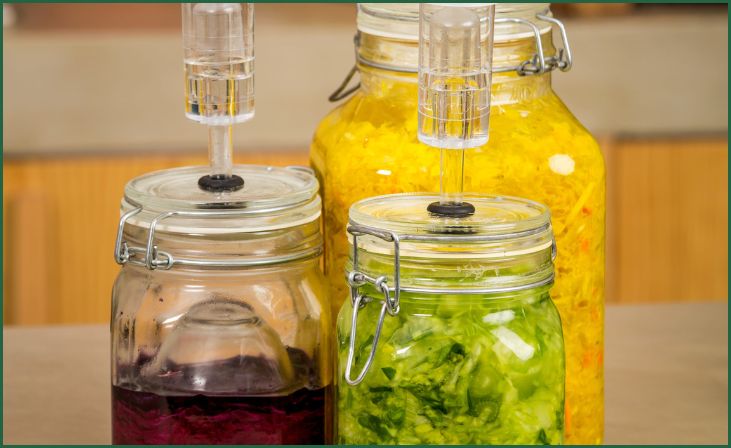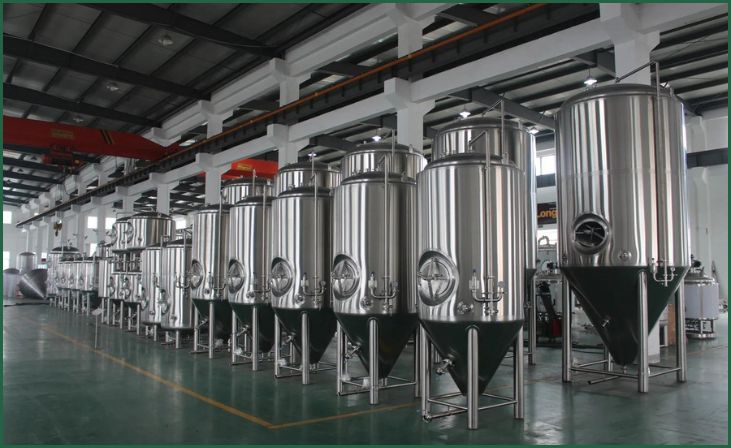Common Fermenting Mistakes – Embarking on the journey of fermentation? Don’t let common mistakes derail your efforts. Uncover the keys to successful fermentation as we explore the nuances and pitfalls in this comprehensive guide. Whether you’re a seasoned fermenter or a beginner, learn how to sidestep the stumbling blocks and achieve flavorful success.
Table of Contents
Toggle5 Common Fermenting Mistakes
1. Inconsistent Temperature Control

Maintaining a consistent temperature is paramount in successful fermentation. Fluctuations can disrupt the delicate balance of microorganisms responsible for the fermentation process. Too high a temperature may lead to rapid fermentation, resulting in off-flavors, while too low a temperature can slow or halt the process altogether. Invest in a reliable thermometer and find a stable environment within the recommended temperature range for your specific ferment. This ensures a controlled and optimal environment for the microorganisms to thrive. This is the first mistake on our list of 5 Common Fermenting Mistakes.
Also Read: How Long Can You Leave Your Fermented Foods?
2. Insufficient Salt or Brine
One of the most common pitfalls in fermentation is the improper use of salt or brine. Salt plays a crucial role in regulating the growth of beneficial bacteria while inhibiting the growth of harmful ones. Insufficient salt can lead to spoilage, soft texture, and undesirable flavors.
It’s essential to follow precise measurements and use high-quality salt, such as non-iodized sea salt, for optimal results. A brine solution that is too weak compromises the safety of the fermentation process, so pay meticulous attention to the salt-to-water ratio. This is the second mistake on our list of 5 Common Fermenting Mistakes.
3. Poor Quality Ingredients

The quality of your ingredients significantly influences the outcome of fermentation. Subpar vegetables, fruits, or other fermentables can introduce unwanted bacteria or impurities, leading to failed or unsafe fermentation. Choose fresh, organic produce free from pesticides and contaminants.
Additionally, use filtered or non-chlorinated water to avoid hindering the activity of beneficial microbes. Quality ingredients set the foundation for a successful fermentation and contribute to the richness of flavors in the final product.
4. Inadequate Hygiene Practices
Maintaining a clean and sanitized environment is non-negotiable when fermenting. Cross-contamination can introduce unwanted microorganisms, jeopardizing the entire batch. Sanitize all equipment, utensils, and containers thoroughly before use.
Additionally, ensure your hands are clean when handling ingredients and avoid introducing contaminants during the fermentation process. A commitment to hygiene minimizes the risk of spoilage, off-flavors, and ensures the dominance of beneficial microbes, resulting in a successful fermentation.
Also Read: Canning vs Fermenting
5. Overfilling or Underfilling Fermentation Vessels

The amount of headspace in your fermentation vessel is crucial for a successful ferment. Overfilling can lead to spillage and create an anaerobic environment, inviting undesirable microorganisms. On the other hand, underfilling leaves excess oxygen, hindering the anaerobic conditions necessary for fermentation.
Follow recommended guidelines for filling levels, leaving adequate space for expansion and gas release. This attention to detail ensures a harmonious environment for the fermentation process and guards against potential issues arising from improper filling levels.
Don't just scroll, subscribe!
BuzzTrail's unique web-stories are the cure for boredom you've been waiting for.
How To Avoid Common Fermenting Mistakes
1. Temperature Control and Monitoring

Avoiding common fermenting mistakes begins with meticulous temperature control. Consistent temperatures within the recommended range are crucial for fostering the growth of beneficial microorganisms while deterring harmful ones. Invest in a reliable thermometer to monitor the fermentation environment closely.
Keep in mind that fluctuations in temperature can disrupt the delicate balance required for successful fermentation. Whether you’re fermenting vegetables, kombucha, or other delicacies, maintaining a stable temperature throughout the process is a key factor in achieving optimal results.
2. Precision in Salt and Brine Ratios
Achieving the right balance of salt in your ferment is essential for its success. Too little salt can lead to spoilage, off-flavors, and compromised safety, while excessive salt can result in an overly salty end product. Follow recommended guidelines and use high-quality, non-iodized salt to ensure the proper regulation of microbial activity.
Diligently measure salt-to-water ratios for brines to create an environment that encourages the growth of beneficial bacteria while inhibiting the development of undesirable ones. Precision in these ratios is a fundamental step toward mastering the art of fermentation.
3. Source High-Quality Ingredients

The quality of your ingredients profoundly influences the outcome of your ferment. Opt for fresh, organic produce to avoid introducing pesticides or contaminants that can compromise the fermentation process.
Quality ingredients not only contribute to the safety of the final product but also enhance its flavor profile. Whether you’re fermenting vegetables, fruits, or other foods, starting with the best-quality ingredients sets the stage for a successful and delicious fermentation experience.
4. Embrace Hygiene as a Priority
Maintaining a clean and sanitized fermentation environment is paramount to avoiding common mistakes. Cross-contamination can introduce unwanted microorganisms, leading to spoilage and off-flavors. Before commencing the fermentation process, thoroughly sanitize all equipment, utensils, and containers.
Practicing good hygiene includes washing hands before handling ingredients and avoiding unnecessary exposure to contaminants. By making cleanliness a top priority, you create an environment that fosters the growth of beneficial microbes and minimizes the risk of fermentation issues.
Also Read: How to Safely Store Fermented Foods
5. Optimal Filling Levels in Fermentation Vessels

Properly filling fermentation vessels is often overlooked but plays a crucial role in a successful ferment. Overfilling can lead to spillage and create an environment conducive to the growth of undesirable microorganisms. On the other hand, underfilling leaves excess oxygen, hindering the anaerobic conditions necessary for fermentation.
Adhere to recommended filling levels, allowing sufficient headspace for expansion and gas release. This attention to detail ensures a balanced fermentation environment and mitigates potential problems associated with improper filling levels. Mastering optimal filling practices contributes significantly to the overall success of your fermentation endeavors.
Conclusion
Fermentation is both an art and science, and mastering it requires attention to detail. By steering clear of common mistakes, you pave the way for successful, delicious results. Armed with the knowledge to troubleshoot issues and enhance your fermentation skills, you’re now ready to create batches of culinary delights that will leave your taste buds singing. Happy fermenting!
FAQs
Why is my fermenting batch not bubbling, and how can I fix it?
Why is my fermenting batch not bubbling, and how can I fix it?
Lack of bubbles can result from a few factors, such as insufficient salt, low-quality water, or inadequate temperature. Ensure proper measurements, use non-chlorinated water, and maintain the ideal temperature range to kickstart fermentation.
What causes a foul odor during fermentation, and is it salvageable?
What causes a foul odor during fermentation, and is it salvageable?
Foul odors may stem from contamination or the growth of undesirable bacteria. While some scents are normal, overpowering odors indicate an issue. Salvage the batch by removing the affected layer and maintaining a clean environment for the fermentation vessel.

